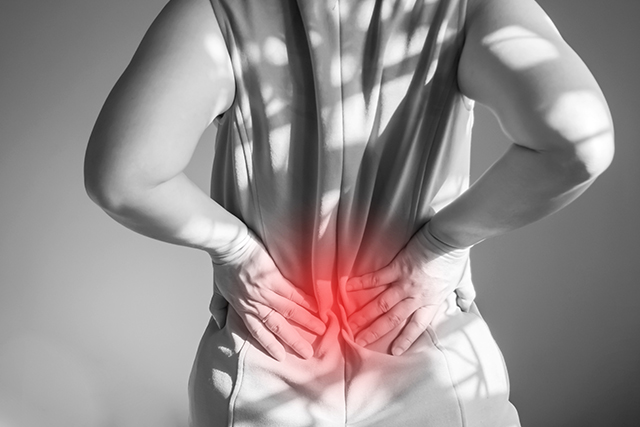Lower Back Pain

What is Lower Back Pain?
Lower back pain is a very common condition that affects the lumbar region of the spine and adjacent anatomical structures. The pain may be experienced as generalized aching localized to the spine or as a burning, stabbing, or shooting sensation that may radiate to the lower extremities.
Causes of Lower Back Pain
Lower back pain may be caused by repeated activity, heavy lifting, a direct blow to the lower back, or sudden awkward movements resulting in muscle or ligament injury. Other causes include herniated or ruptured spinal discs and arthritis of the spine due to narrowing of the lumbar canal.
Risk Factors for Lower Back Pain
Almost everyone experiences lower back pain at least once in their lifetime. Factors that increase the risk include older age, lack of exercise, poor workplace ergonomics, and improper posture while lifting objects.
When should you see a doctor for Lower Back Pain
You should consult a doctor if lower back pain lasts longer than a few weeks, radiates down the legs, or is associated with symptoms such as weakness, loss of sensation, or unexplained weight loss.
Identifying the underlying cause for Lower Back Pain
Dr. Laxman will review your symptoms and medical history and perform a physical examination. Imaging studies may be recommended, including X-rays to assess bone and joint abnormalities, bone scans to identify compression fractures or tumors, MRI or CT scans to evaluate soft tissue structures, and nerve conduction studies to assess nerve involvement.
Treatment Options for Lower Back Pain
In many cases, Lower Back Pain in Koramangala Bangalore improves with rest and avoidance of activities that worsen symptoms. If pain persists, medications may be prescribed for symptom relief along with physiotherapy to strengthen lower back muscles. Additional treatments may include spinal injections for severe pain or surgery for conditions such as spinal stenosis or herniated discs that do not respond to conservative management.
Prevention of Lower Back Pain
Lower Back Pain in Sarjapur Road Bangalore can often be prevented through regular exercise, maintaining proper posture while sitting, standing, and sleeping, and using correct lifting techniques.
